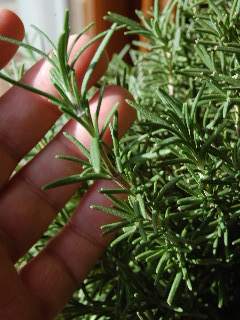
Let’s look at rosemary today.
Here’s a plant that’s unique in its usefulness, being at home not only in the garden but also in the kitchen as well.
In the garden, rosemary is a perennial herb with the needle-like appearance of yew.
The evergreen foliage of the plant grows in an upright but flowing and trailing shape as the rosemary increases in size.
Rosemary plants set into the garden can assume the structure and size of small woody shrubs and are often shaped into hedges at the garden’s edge.
And, rosemary doesn’t demand much when you do give it a place in your garden.
Full sun, not too much water, and only moderately fertile but loose soil will allow the plant to thrive.
Perhaps these conditions mimic those found in the Mediterranean region, which is the origin of the rosemary plant.
If your rosemary is small and planted in a container, it makes a great houseplant. Be sure to give it a place near a sunny window to assure its requirement of plentiful sunshine.
You’ll enjoy the fragrance that your plant adds to the household air.
Or, if you’re like us, a couple of times a day, you’ll walk by your rosemary plant, brush the palm of your hand across the foliage and marvel at the pleasantly unique aroma!
And, now that you’ve got a live rosemary plant in your house, you’re all set to start using this herb in the kitchen.
You can actually break off or cut a few sprigs from the plant, rinse them under cold tap water, and add them directly into your soups, roasts, or vegetable dishes--you can’t get any fresher than that!
Or, you may want to dry some of the foliage, crumble it into small pieces, and add the dried herb into your dishes.
The foliage can also be used in the making of herbal tea.
 Let’s look at rosemary today.
Let’s look at rosemary today.